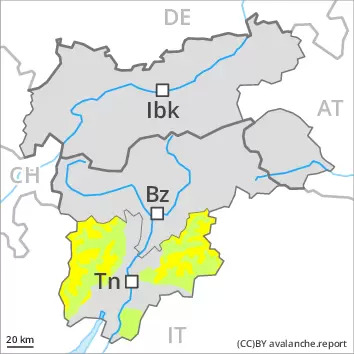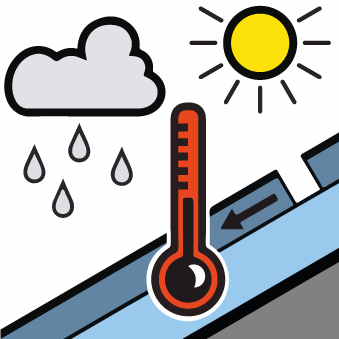
Danger level
 | 2200m |
|  |
|  | ||||
|  |
|  |

Fresh wind slabs represent the main danger. Small and medium-sized moist and wet avalanches are possible as a consequence of warming during the day and solar radiation.
As a consequence of new snow and wind from variable directions, wind slabs formed in the last few days in particular at elevated altitudes. These can in some places be released, mostly by large loads and reach medium size. Caution is to be exercised in particular adjacent to ridgelines and in gullies and bowls on very steep slopes at high altitude.
As a consequence of warming and solar radiation, the natural activity of avalanches will increase, in particular on very steep slopes below approximately 2200 m, and at the base of rock walls.
In addition small and medium-sized gliding avalanches are possible, especially on very steep grassy slopes.
Snowpack
dp.10: springtime scenario
The old snowpack will be stable over a wide area. The more recent wind slabs remain in some cases prone to triggering especially on very steep shady slopes at intermediate and high altitudes. In some cases snow depths vary greatly, depending on the infuence of the wind. Below the tree line from a snow sport perspective, in most cases insufficient snow is lying.
Tendency
As a consequence of warming, the natural activity of moist and wet avalanches will increase, in particular on very steep sunny slopes.




